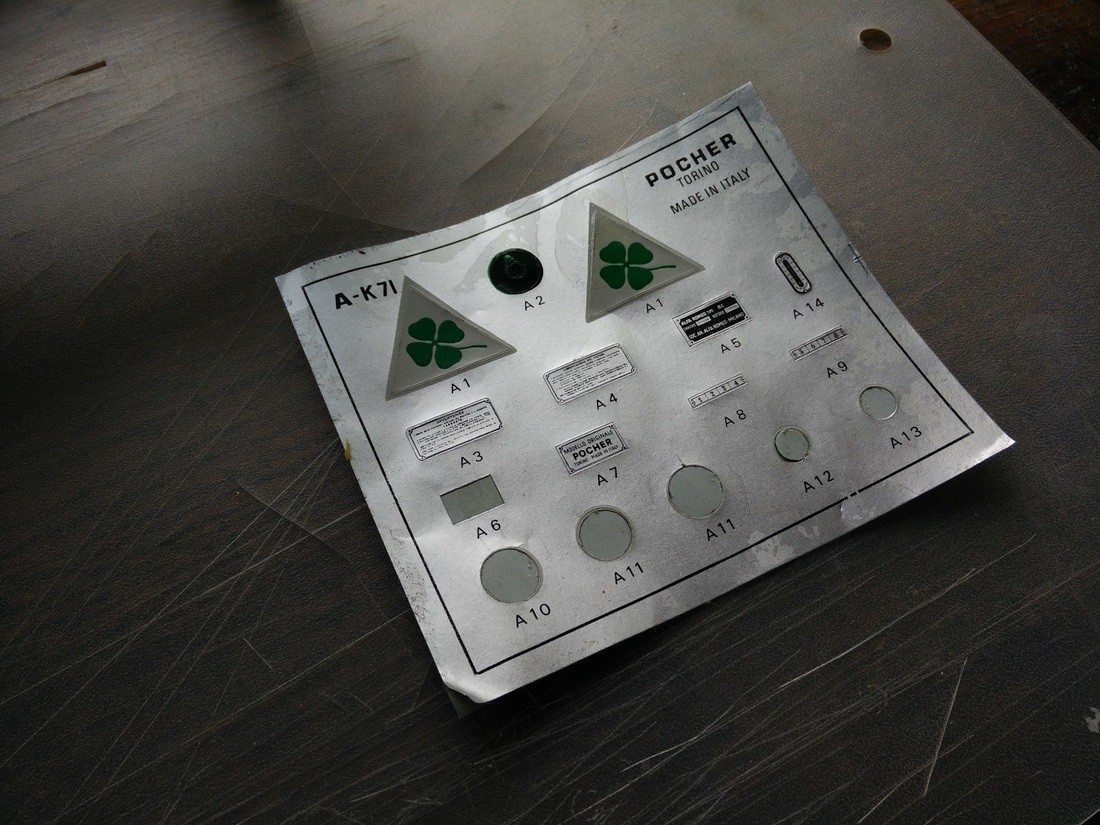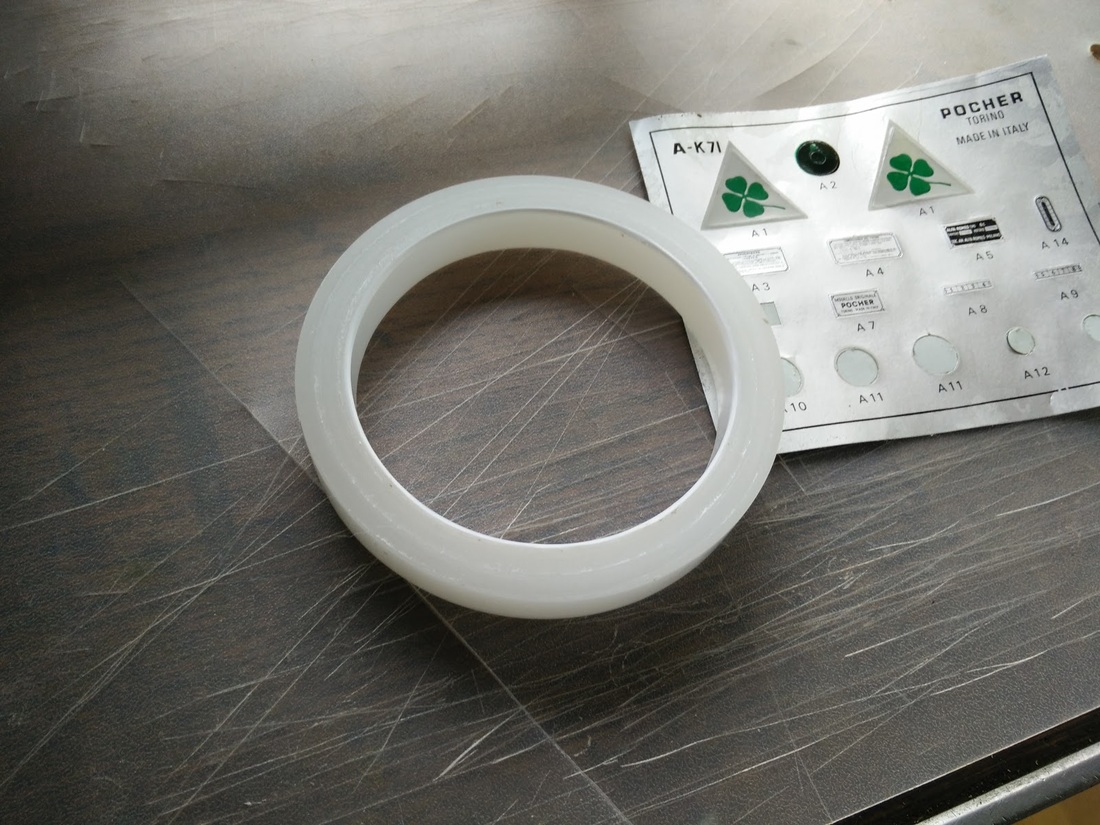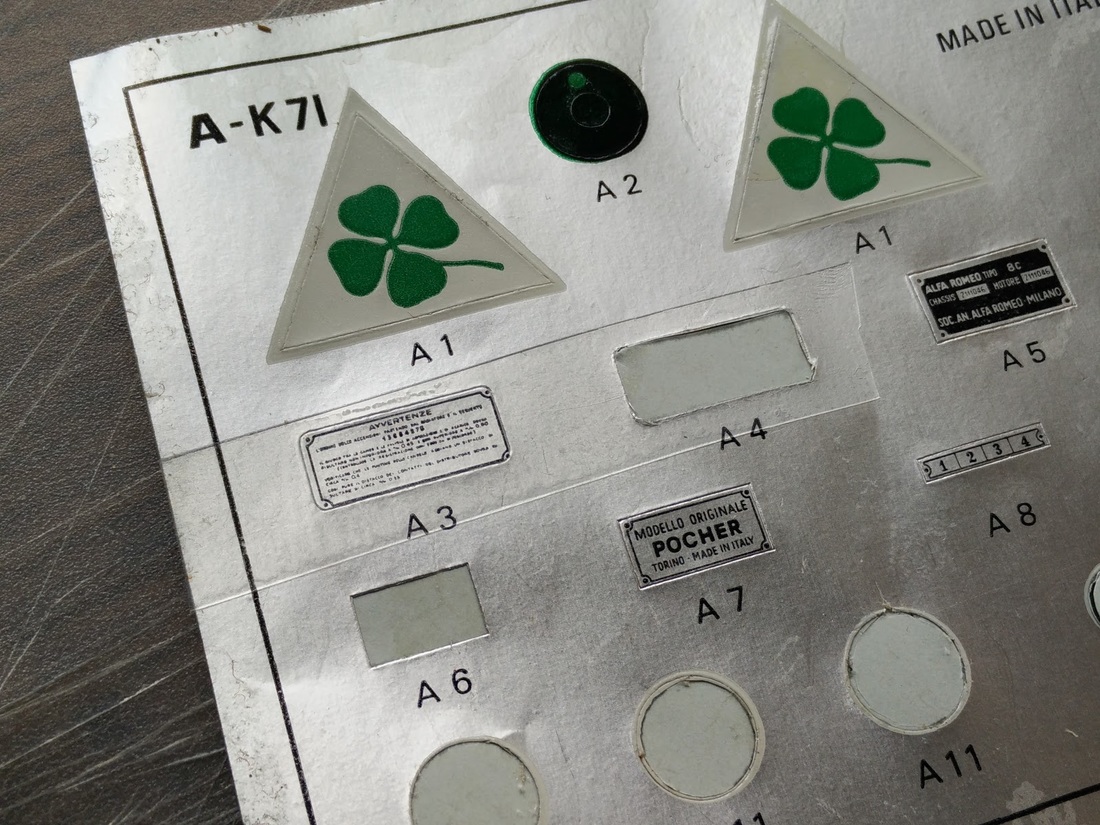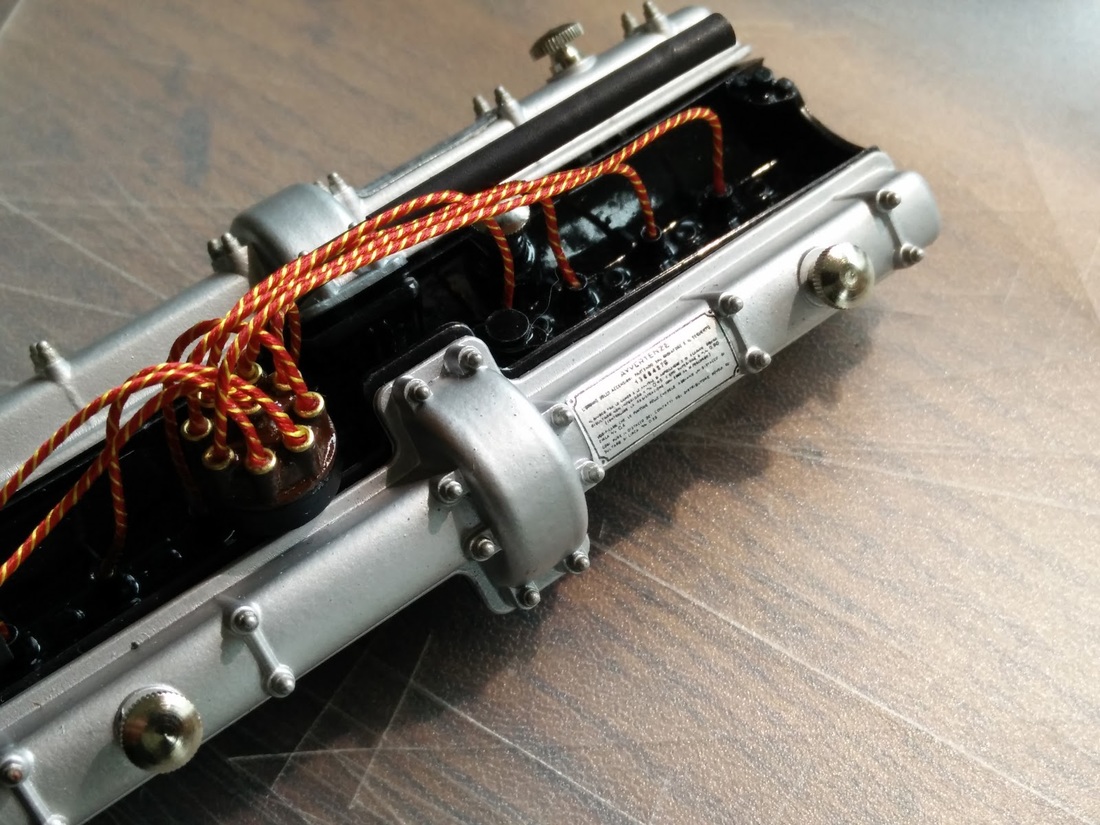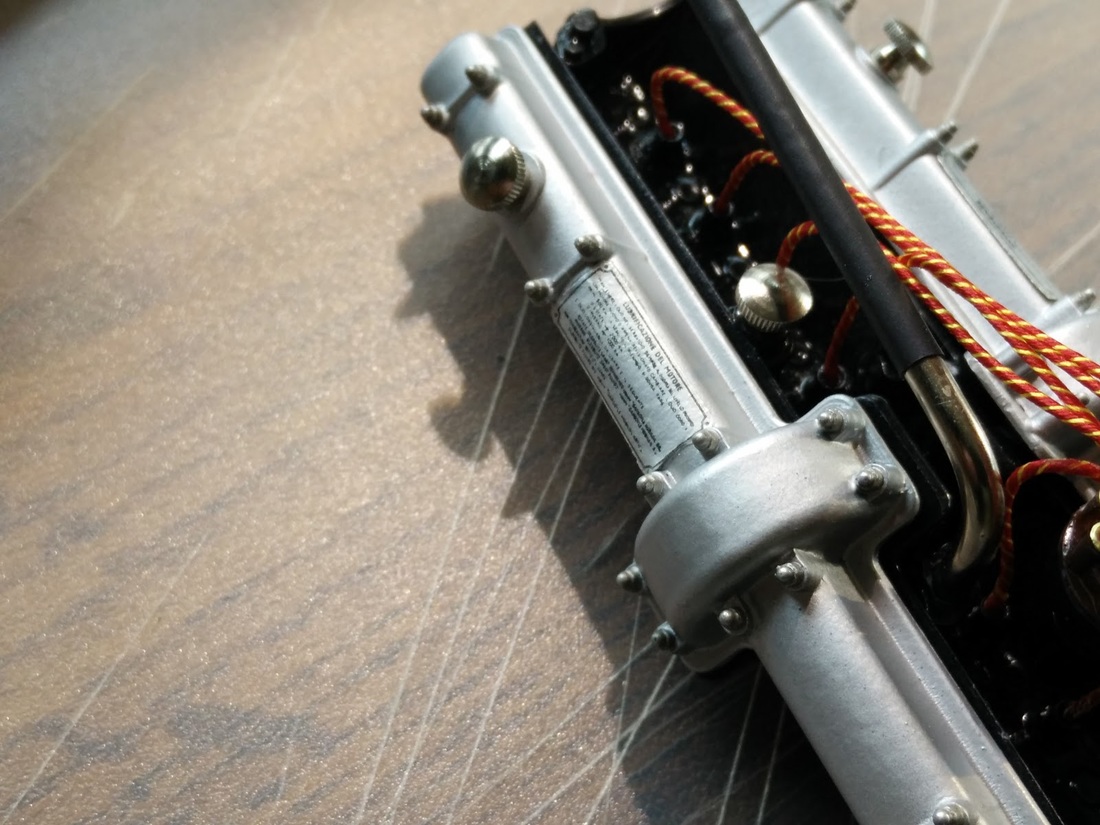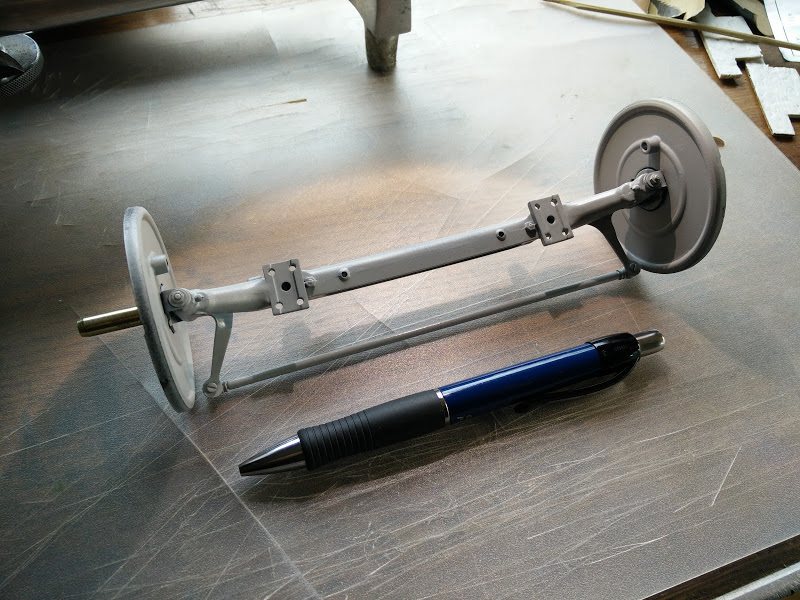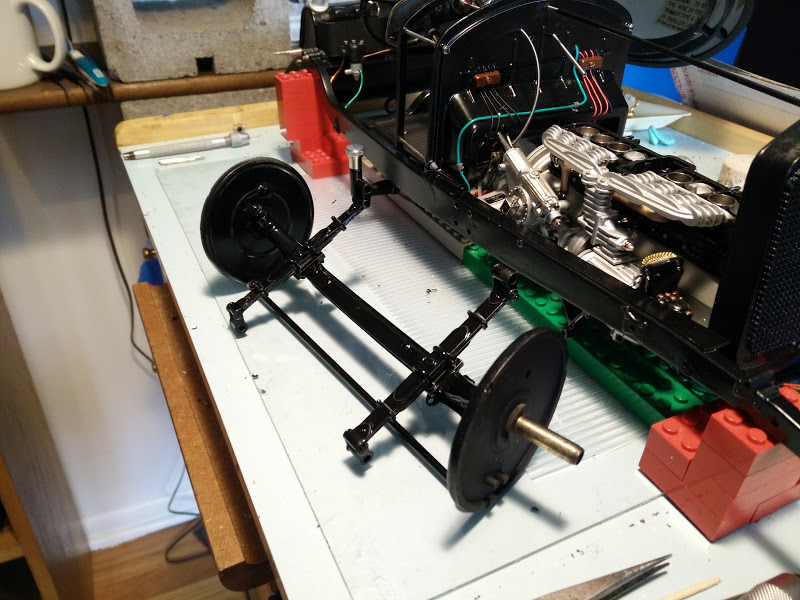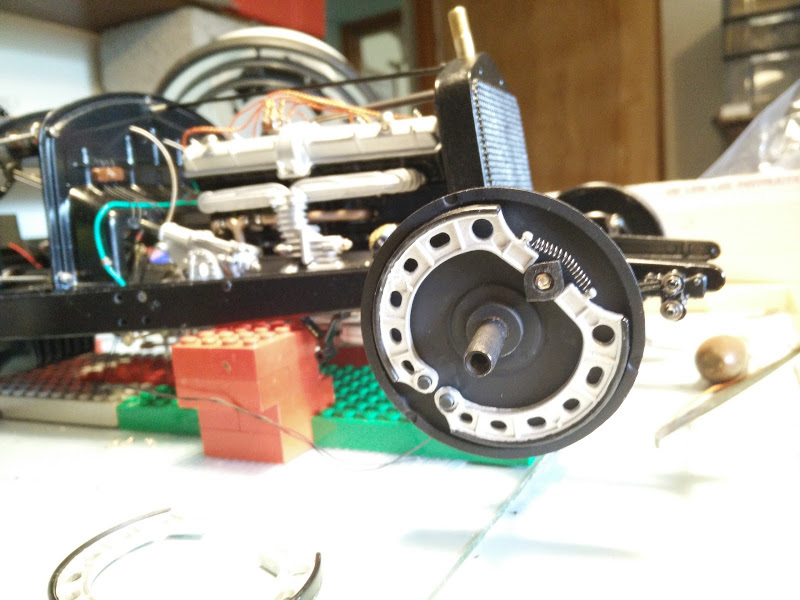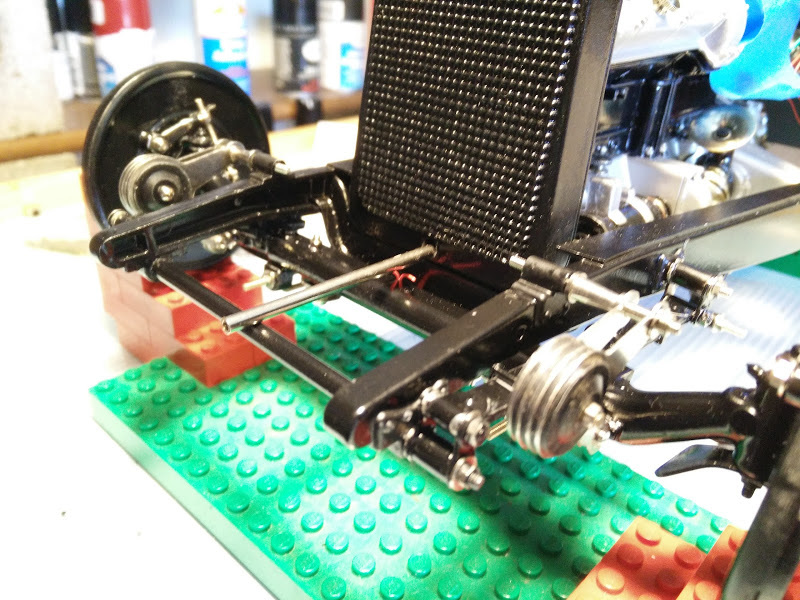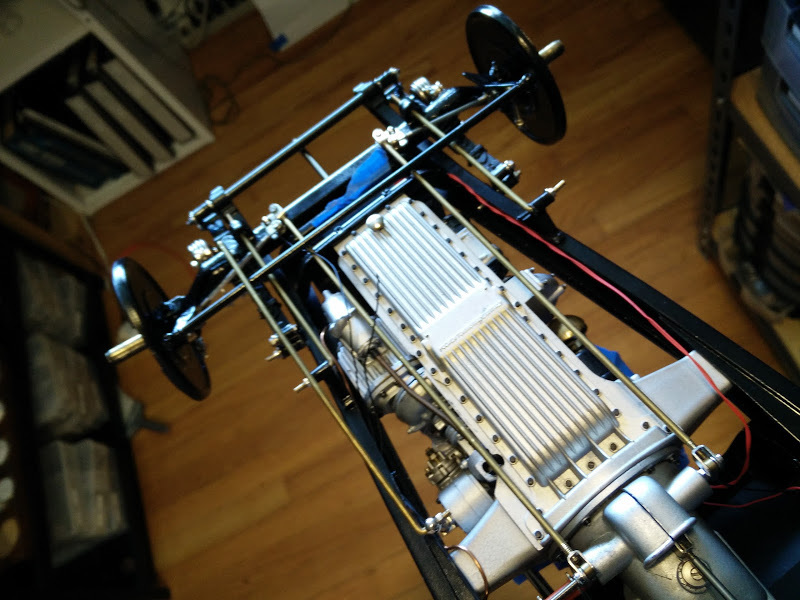|
The Pocher kits come with some pretty primitive stickers. Aside from being primitive to begin with, they are also now 40 or 50 years old. The glue on their back is all but gone and they are often faded beyond recognition. You can get new decals for Pocher kits, but I wanted to use the originals. Mine still look OK, and there is just enough "stick" to work, at least for now.
|
|
It is recommended that the designs be protected with transparent tape. I think regular tape would be a bad idea, so I used some special archival tape made for repairing rips in books. It is a thick vinyl-like stuff that will not discolor and shields UV. It's inexpensive and works well, even on surfaces that aren't flat.
|
|
The front axle was a huge pain. The toe-in of the front wheel on the car is *way* too much. Getting this adjusted involves a careless bent on both sides that is very tricky, and can only be done once without almost certainly breaking the metal parts.
I go one side really. But the other is still angled more than I'd like. I don't think it will be too obvious though. |
|
One of many problems with Pocher kits "out of the box" is that the car is too heavy for the solid plastic leaf springs provided. They just bottom out. Most people support the car with stands when displayed. And I am mostly building this kit "as is" for the most part, without a lot of customization. But since this is a functional issue I am using steel springs.
|
|
Here, the front end mechanical details are all installed. This includes brakes, suspension and steering. The steering and suspension work well. The front brakes on these cars are notorious however. Mine come really close to being functional. I added and modified a few parts to eliminate the play in the system that usually is the main issue.
|
